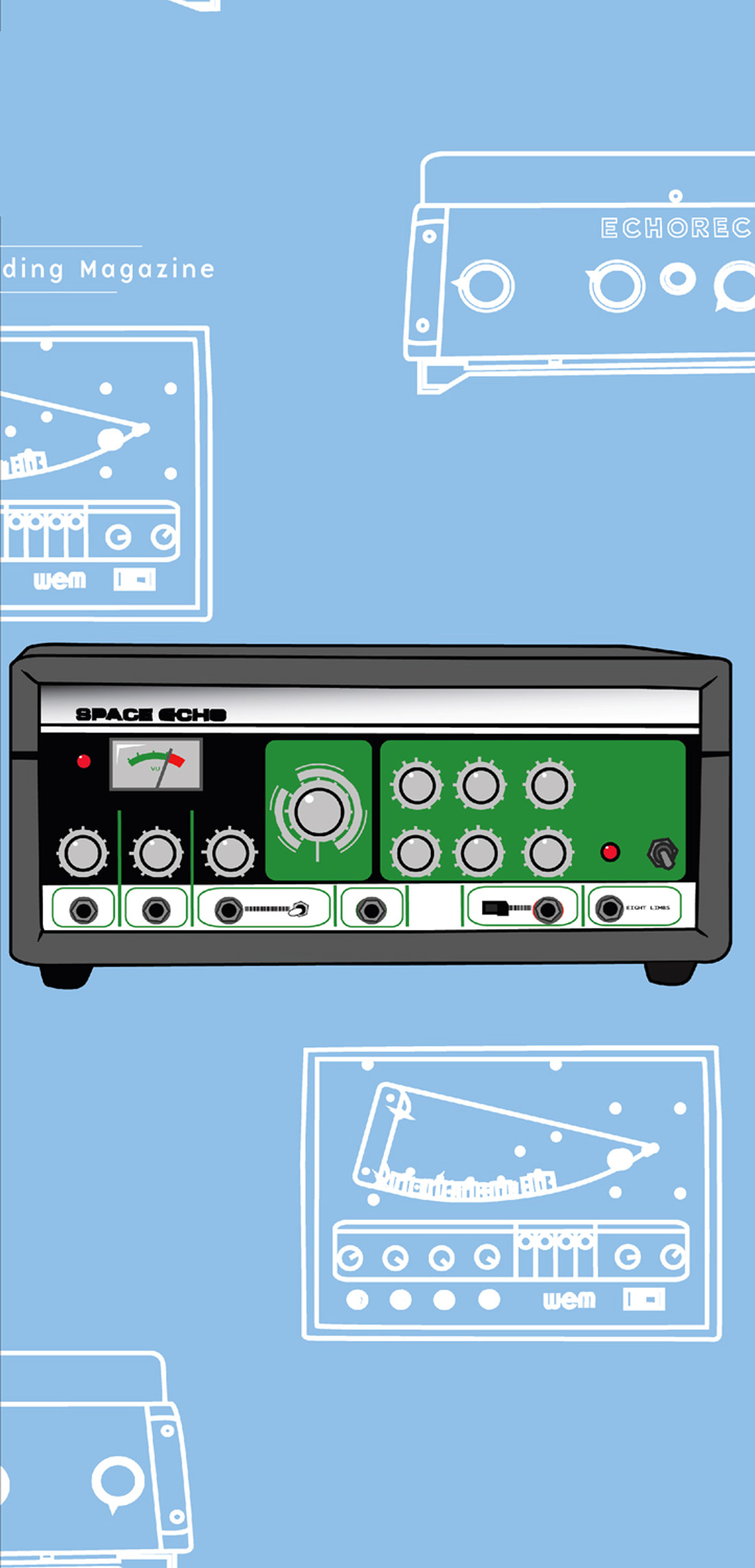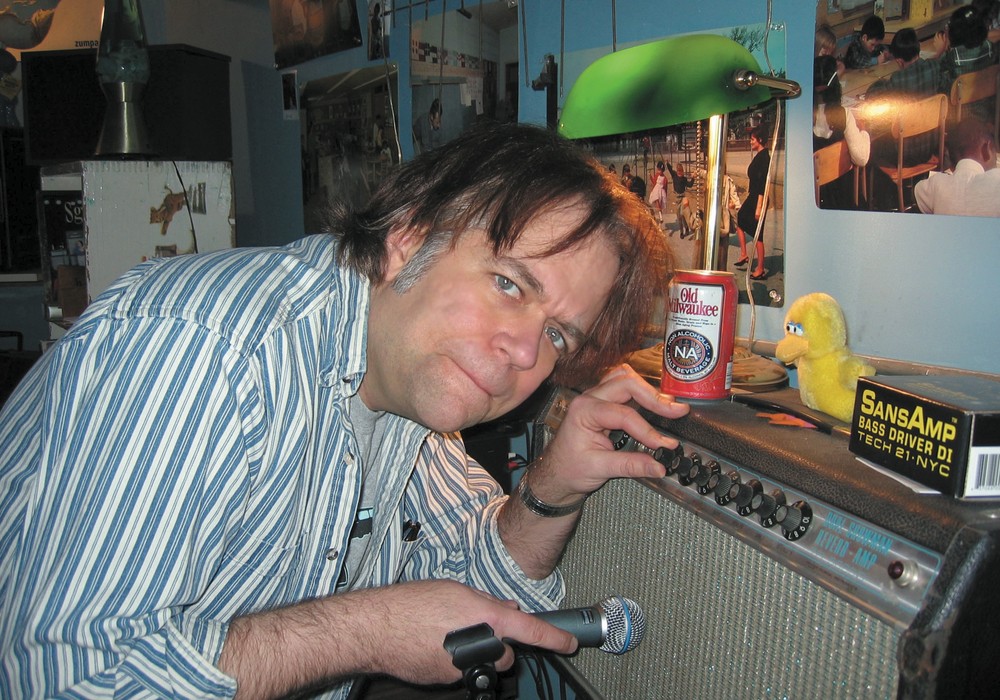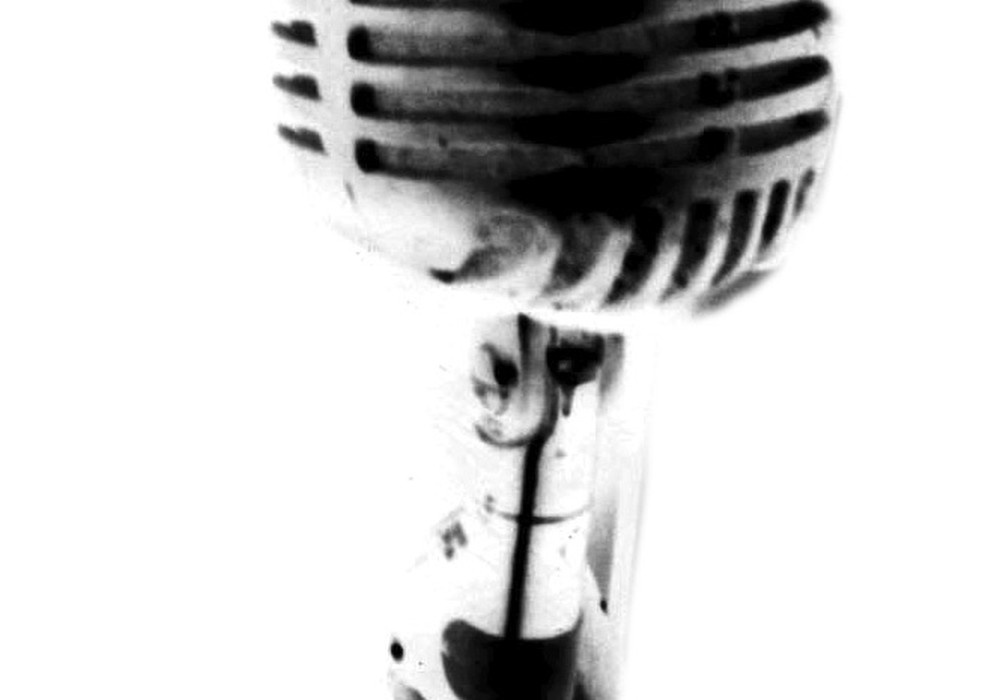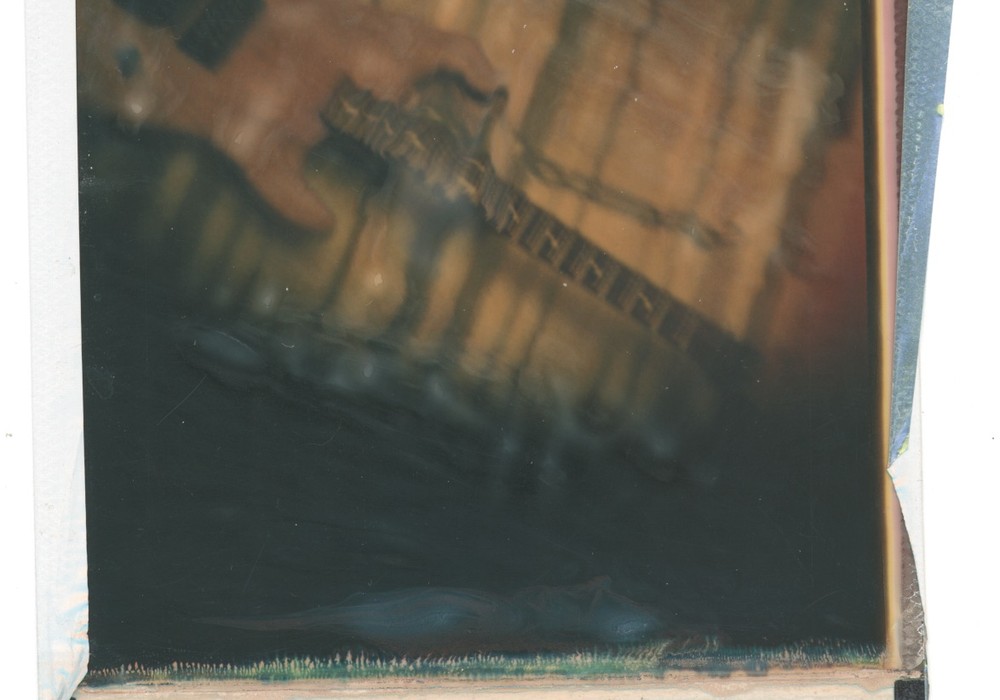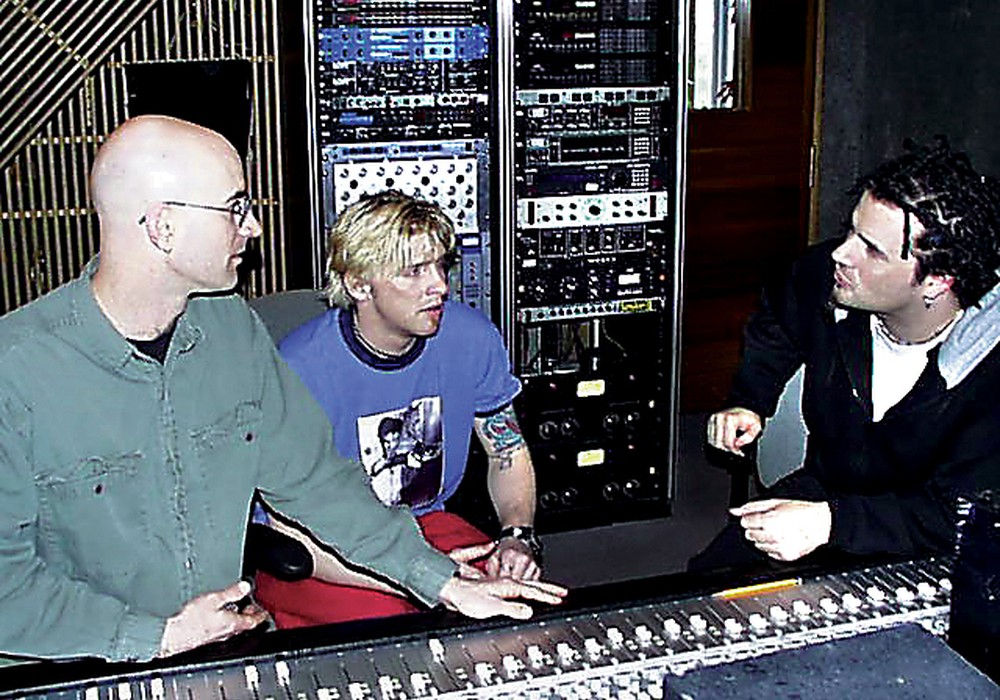You've just finished the mix of a song and printed it to tape or back into your DAW. You spent hours getting everything just perfect with your analog outboard gear and console. If you tried to write the settings down for every knob it would take several hours and the chances of getting it all patched in again and "recalling" the mix exactly is pretty slim. The band is stoked and so is the producer. You're a hero. Everybody wants to take you out for drinks but you tell them to go ahead and you'll catch up with them in about an hour. Once the band leaves, you start printing the stems of the mix.
This article will present a way to mix in the analog realm, while allowing for balance changes after you're done with the console and outboard units. Anyone who's spent time mixing through a console with a bunch of outboard equipment knows how frustrating it is to get the call, "We love it, but we have to turn up the ____ or we can't use the mix."
When we (John and Larry) first started working in recording studios, everything we multitracked was on analog tape and the concept of recording into a computer was way off in the future. The usual process of making a record involved tracking to a master tape, and then mixing down the tracks to a stereo tape recorder. Multitrack tape to mixer to 2-track tape. Simple. You would sit down at the console, balance the tracks to stereo, and if you deemed the mixes unsatisfactory you would repeat the process.
With the advent of recallable, automated consoles, many elements of our working methods began to shift. A mix might begin to take shape during the tracking sessions. Full console recallability, such as the SSL mixer line, could facilitate large or small changes to a mix. Recall sheets allowed outboard gear and partially automated consoles to be reset with varying degrees of success.
But the widespread adoption of computer-based recording now allows digital-based mixes to be 100% stored and performed in the digital realm; or "in the box" (ITB) as it's commonly termed. As this technology has become available to the general public through affordable software, a "mix" is now less of a performance, and is instead something that can easily be returned to repeatedly for subtle changes and tweaks. But now we are in a scenario where we've abandoned some fabulous mixing consoles and outboard gear, and our hands are no longer on the faders guiding an intuitive mix.
We're not presenting this article on stem mixing with an agenda to denigrate ITB mixing; it would be foolish to attempt to dictate how others work. Instead we offer it as one of the many ways to integrate analog and digital working methods in the studio, as well as a way to provide the best work for your clients (or yourself) without endless mix recalls sucking up your time. It also offers up an excellent way for a freelance engineer to efficiently utilize time in a professional studio and still offer up mix tweaks on a session on a budget.
Some newer recordists might ask, "Why would you not want to mix this ITB?" Almost everybody I've met who works as a professional recording engineer will agree that mixing through an analog console usually sounds better. However, many professional engineers do mix ITB. Reasons include repeatability, recall and the ability to please clients and record labels. Labels often ask engineers to be able to recall any mix instantly and make a minor change. This has become expected in the music industry at all levels. But still, I've never heard anybody say, "I mix in the box because it sounds better." Never. -JB
What are stems? Stems are simply elements of a final mix that have been isolated as their own stereo mix. These stems can then be combined in parallel, using the same starting point, to create a similar version of the main stereo mix but with slight changes as needed. In film and post-production audio it has always been common to work with stems — elements of the final mix broken out into various subgroups. Dialog, music, sound effects, background sounds and such are all submixed into surround or stereo tracks for ease of final film audio mixing. This allows for control over the sound without having to monitor hundreds, or thousands, of tracks.
For Post Production: Often referred to as DME stems (Dialog, Music, Effects) they are generally due as deliverable assets along with the final mix. Stereo mix = stereo stems, surround mix = surround stems. If ya wanna get really specific there are also DAME stems (Dialog, Announcer, Music, Effects), but usually only for content like a documentary where there is a VOG (Voice of God, disembodied) that may be over on-camera BG dialog. It can get even more specific during mixing, but for delivery that about covers it. -JD
In typical stereo-based music production, think of stems as 2-track elements of a final mix, with all treatments (EQ, compression, effects) in place and individual levels set to recreate the final mix when combined with the rest of the stems. Here's a simple way to understand making and working with stems: once you have created a stereo mix you are happy with, run an instrumental version (mute the vocals) and next run a vocal (or a cappella) version with any effects and treatments in place. Make sure all tracks start from the exact same beginning point. You've just created two stems of this mix: Stem 1 — instrumental mix and Stem 2 — just the vocals. Both stereo tracks can now be placed in a new DAW session (or this same session, with other tracks muted) and when played simultaneously they will present (basically) the exact same mix you had before. If you boost the level of the vocal track, you can now have a mix with a louder vocal by bouncing to disk, or printing out to tape. Simple, and it can occasionally save the day.
At this point you can obviously remix just these two stems and create a vocal up or vocal down mix. Keep in mind that if you are using an analog reverb like a plate, spring or hardware based digital reverb you'll need to consider if you'll want to be able to change that balance later. If you do you'll need to print the vocal stem like this: Stem 2a — vocals, no reverb and Stem 2b — reverb from vocals with no dry signal.
You'll also need to decide if you want to keep the background vocals if any as part of the main vocal stem. If not, you could end up with even more vocal stems: Stem 2c — harmony vocal, dry, Stem 2d — harmony vocal reverb, Stem 2e — stereo oohs and ahhs track, dry, and Stem 2f — reverb from oohs and ahhs. Now you can recall any possible variation and make changes of all the vocals relative to the music and change those balances. This give you a lot of flexibility but the downside is that you could end up with more noise as you'd have lots of reverb stems for instance and each of them would have some noise associated with them. Cumulatively this will be noisier than the original mix that had everything going into one or two reverb units. You could always print the vocals with the reverb and then do a stem dry. Then if needed your could resend the dry stems to the reverb unit. Keep in mind that the dry/reverb option applies to every stem you make, but to conserve space, we're not going to detail those for the rest of this article.
You need to be mixing your stems back into your DAW and not to tape, even if you are mixing to tape. In order for this to work, all the stems need to be in perfect sync. You won't be able to do that if a tape machine is in the chain. If you need to use your stems later and want to have the mix on tape, you'll need to get the tape machine hooked back up and print your mix again from the combined stems. -JB
What's the next most requested mix change? My experience is the bottom end can be a bit off. "Can we get more/less bass?" "Can you pull out some bottom end from the kick drum?" Yes, we can do that. Let's make more stems: Stem 3 — music only mix with no bass, Stem 4 — bass only, Stem 5 — music only with no drums or bass, and Stem 6 — drums only. Got it? Now with your six stems you can change the level (and even apply EQ) on individual stems, and also change the balance/EQ on the drums, bass, vocals and the rest of the music. Depending on the song, you may want to keep going and make more stems. Maybe do a stem of kick, snare and then overheads if you really want to get anal. The arrangement and instrumentation and your best judgment and intuition will determine how many stems you need to make. Now take this same concept and apply it to all the elements of your mix. For a typical rock/pop type song you could print stereo mixes of the drums, bass, guitars, keyboards, lead vocals and backing vocals. Make sure each stem is clearly labeled so you know what it is in case you need to revisit this mix months, or even years, later.
or me, using stems is more about making sure you have all the components separately and figuring out how to print them so you have access to them. For instance, a guitar intro and a shaker can be on the same stem — I can always break them out into more tracks in my DAW later. Arrange it so nothing overlaps. -TM
Of course every different song, style of music and artist may present unique situations for stem creation and mixing. If you are printing stems grouped by instrument category, keep in mind that any prominent solo instruments may need level adjustments later, so print these separate. It's a good idea to reference your original mix while "remixing" with the stems. You should have it printed into the same session that you're working on. Assign the original mix to one monitor input and the new mix to another so you can quickly switch between the two to make sure that the changes you need to make are good, while also making sure what you like about the original mix hasn't changed.
You may also need to do a "clean" vocal version to remove obscenities. If it's a single, you may need to do a radio edit to shorten the song. If there are overlapping elements that require a multitrack edit rather than using the 2-track you may be able to do the edit with the stems. -AL
For all the stem recombining/mixing that I have done, I have always done the new mixes ITB. Aesthetically I like the idea of piping the audio back through a console, but on the projects where I've used stems, I've already run everything through my mixer. Do I want to do this twice? It might be awesome, and I should try it soon! But the reality is that many of my stem fix mixes occur on my laptop, at home or on the road. Ever since Pro Tools 9 and the UAD-2 SOLO/Laptop came out I've been able to "save" mastering sessions from more hotel rooms and airports than you can imagine. -LC
I use a console to remix stems. The first thing I do is calibrate the console inputs/faders to Pro Tools using Avid's Signal Generator plug-in. I set each fader so the tone is at 0 VU. You can substitute any other reference you might want to use. I then pull up the stems onto pairs of faders, panned left and right. Then I make changes. You can either push up the faders manually, or use the volume automation in the DAW to change the volume of the stems; the advantage of using the DAW to make changes is the ease with which you can recall this stem mix when the client asks for the third remix. I've found a "colored" console isn't much help. We have a 16- channel Neve and an API 1608 console [#81] in our main mix room. I love the way the Neve sounds, but for mixing from stems the API is much more open and transparent. I've also done some stem mixes in our B room using the affordable Roll Music Folcrom RMS216 [#45]. This is a completely passive, analog summing mixer with amazing specs. -JB
When you're mixing from stems in the box, it's easy to add "just a little more" of a particular element, but you'd be surprised how little of it you actually need. To make a "vocal up" mix all you need to do is to take your original mix and add in the vocal stem. You'll begin to hear the vocal pop, even with the stem down at -14 dB. -TM
Phase and timing can be incredibly important at this point. When overlaying ITB elements in a mix that have not been piped through the console, I frequently work on nudging tracks around in time and will pop on the Little Labs IBP plug-in (via the UAD- 2 platform) for fine tuning phase relationships as well. And speaking of phase relationships, by simply throwing this element out of phase with the mix you might be able to reduce the level of an element in a mix. Like magic! -LC
If I've created stems immediately after printing a mix, I can take an element, phase invert it, mix it with the main mix and drop the volume all the way to zero, literally removing that element from the mix. You'd be shocked what you can get away with! It works wonders with reverb on vocals. If you print the vocal reverb only, it's easy to phase reverse it later over the mix and cancel out the reverb, any amount you want, to dry up the mix. -TM
Potential problems while making stems include: (1) If your console-based mix is incorporating a compressor or limiter on the output of the mix bus, the fact that not all of the elements of the mix are hitting the bus with these individual passes will cause the compressor to act differently than when it was affecting the whole playback. (2) Running multiple elements through effects that might contain background noise (plate reverb, tape delay, etc.) may bring up the noise floor if numerous passes require the effect to be in the mix. (3) If you combine passes that have run though the console with tracks that have remained in the computer, the console-treated stems will be later in time due to the latency of the converters and will be out of phase with any related tracks.
Do I print stems with the mix bus compressor on or off? I debated this for a long time, but I find myself leaving the mix compressor on and not bypassing when printing stems. I find if I'm rebuilding a mix completely from individual stems, it's most likely to create something that is very different than the original. Also, if I don't have immediate access to that mix bus compressor I can still make changes wherever I am. As most changes are easy to overlay on finished mixes, a bit less compression on the stems works out well. -TM
If you have a compressor over the mix, do you print the stems with the compressor on? I would say it's best to print them without it, recall the settings; when you recombine the stems, put the compressor on (and any post comp EQ, I suppose). I don't think individual stems, with the compressor on, sounds the same as compressing the whole thing together. Each element will hit the compressor differently, so you're actually parallel compressing each element of the mix. -AL
Print a full mix on a separate stereo track, mute it so that it does not play back while you are outputting the stems and side chain the output of that full mix into the key input on your mix bus compressor. That way each different stem will be compressed just as it was during the full mix because the bus compressor is tracking and responding to the full mix while processing each stem. This was a lifesaver for me back in my R&B days. There were a lot of heavy rhythm tracks modulating the vocal balances and, until I happened upon this method, my stems would never recombine into any semblance of my original mix. -DW
If needed, sometimes radically new mixes can be created with stems. We've compressed, equalized and added effects to already processed lead vocals in order to get them to work better in a mix. Whole stems can be discarded and new ones built ITB that, when combined with the other stems, create a new take on the song. Remember there are no rules. In many cases you need to try anything you can in order to please a client or to get to that "final" place with a mix.
You may find yourself mixing without the artist present. In these cases, I find that it's best to try to get the mix 80 to 90% done. Focus on the energy and flow. Make sure everything is hitting like it's supposed to, but don't get too crazy on the small details. Get it feeling great and make sure the analog gear is doing its business. When you're stoked, print it. Afterwards, spend time doing your stems. That hour or so you thoughtfully spent on your stems will be worth way more than obsessing over the mix. Then you can get everyone's feedback while finishing the last part. Get the mix to the artist and work with their feedback and the stems to go the rest of the way. This has allowed me to move confidently from song to song and make effective use of my time, rather than leaving a mix sitting on the desk overnight. -TM
I mix on the board and get to the point where I would normally turn on the automation, but then I print stems into the computer and finish the mix off from there. The advantage is that I can finish the mix off over a few days, giving me time to live with it before submitting it, and recalls are not ever a problem (as I don't have to do them) so it makes any changes people want to make very quick and easy. It's also good to be able to be working on a few mixes at once, which makes the process far quicker and efficient. -BB
Okay, so now you get the dreaded call, and you've been asked to make some minor (or major) changes to that "perfect" mix you did. No problem, you say, just tell me what you want changed and I'll get you a new mix tomorrow. You're a hero again.
The great thing about the stem mixing method is that you can preserve the sound of all the compressors and EQs you spent hours tweaking and can call them back up at any time. The process of printing the individual stems, and hearing isolated elements of a mix that might be considered finished, can even send one immediately back to work on the mix in a new light. Maybe it's an obnoxious sound in the bass guitar that had been masked by the drums, or maybe there are bad drum edits that were covered up by guitars. "Fixing" these sounds can help create a cleaner, stronger mix. Breaking down a mix into its components will teach you to listen to elements of a song with far more detail in mind before settling on a final mix.
Stem mixing can not only save a nearly perfect mix at the last minute, but can also open up new hybrid ways of working, along with some interesting and creative possibilities. How much easier is it to cut between completely different drum mixes when they are on two stereo stems rather than existing as 12 individual tracks in a mix? Bringing creativity and excitement to our work is always the goal, as is delivering work that we are proud of and our clients are happy with. Getting the job done and doing amazing work at the same time — what more can we strive for?
